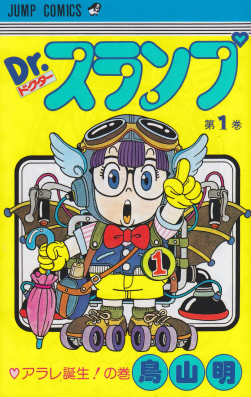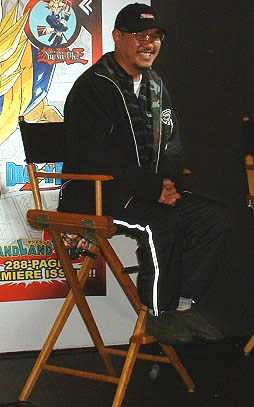Jul 29, 2022
Nagoya’s Dragon – Akira Toriyama, Creator of Dragon Ball
What’s the first thing that comes to mind when you think of Japan? Sushi? Oh, okay, how about the second thing? Samurai and geisha? Oh, okay, the third thing? The 1853 Battle of Shizugatake? Come on; now you’re just being obtuse. What I’m reaching for here is manga.
Japanese comics are a global phenomenon, and both in Japan and abroad, there are few as recognizable and renowned as Dragon Ball. Set in an alternative Earth called Dragon World, the story of Goku and Bulma’s quest to gather the seven Dragon Balls, a set of orbs that summon the wish-granting dragon Shenron, amongst extra-terrestrials and anthropomorphic monsters has spawned multiple spin-offs, animes, movies and a wealth of merchandise. Yet, though this is an otherworldly tale, its origins are much closer to home for many of us, as it all came from the mind of Nagoya native Akira Toriyama.
The Creation of a Creative
Born in Nagoya in 1955, the die was cast when a young Akira first watched One Hundred and One Dalmatians. Spellbound by the quality of the animation, Akira decided that it was his dream to be as talented as the Disney animators. This objective was intensified in elementary school when he was shown a classmate’s older brother’s manga collection, with Astro Boy key in encouraging his burgeoning desire.
As he grew older and television became more of a staple in Japanese homes, he was increasingly influenced by the Gamera series of kaiju films and Ultraman, igniting his passion further. As a result, he was drawn to a high school focused on creative design, leading to his first job designing posters at an advertising agency in Nagoya. However, this role was short-lived, as he quit after just three years of turning up late and being reprimanded for his casual attitude towards the salaryman lifestyle.
From Career Slump to Dr. Slump
 Aged just 23 and without a job, Toriyama came across a copy of Weekly Shonen Magazine in a coffee shop and noted that the manga was appealing for amateur animators to enter a contest. Perhaps reflecting his lackadaisical attitude towards work, Toriyama was too late to enter, but it sparked an idea in him, and he sent in an entry to Weekly Shonen Jump’s Newcomer Award. Unfortunately, his Star Wars parody was ineligible for the contest searching for original stories, but he caught the eye of editor Kazuhiko Torishima, who encouraged him to keep submitting.
Aged just 23 and without a job, Toriyama came across a copy of Weekly Shonen Magazine in a coffee shop and noted that the manga was appealing for amateur animators to enter a contest. Perhaps reflecting his lackadaisical attitude towards work, Toriyama was too late to enter, but it sparked an idea in him, and he sent in an entry to Weekly Shonen Jump’s Newcomer Award. Unfortunately, his Star Wars parody was ineligible for the contest searching for original stories, but he caught the eye of editor Kazuhiko Torishima, who encouraged him to keep submitting.
As a result, Toriyama’s first published works, Wonder Island and Wonder Island 2, were published in 1978. Unfortunately, these were panned by readers, but instead of giving up, the criticism spurred him on, and over the next year, he drew some 500 failed stories. This perseverance and dedication finally paid off after Tomato the Cutesy Gumshoe‘s minor success followed Dr. Slump’s smash sensation.
Based on super strong robot Arale and her creator, the lecherous inventor Senbei Norimaki, Dr. Slump earned Toriyama the Shogakukan Manga Award for best young person’s manga series in 1981. It was adapted for prime time TV that same year, making its creator a household name. By 2008, Dr. Slump had sold over 35 million copies in Japan.
Becoming a Baller
By 1982, Toriyama’s work was featured regularly in magazines, winning him yet more accolades, and an official fan club was opened. At around that time, Torishima, who had become Toriyama’s editor, suggested that since the artist was such a fan of kung-fu movies, it would make sense for him to create a kung-fu manga aimed at teenage boys. This led to a two-part series Dragon Boy in 1983, which followed a young boy skilled in martial arts as he escorts a princess on a quest to return to her home.
The success of Dragon Boy led to it, as well as elements of his other work, such as The Adventure of Tongpoo and Dr. Slump, evolving into the series Dragon Ball. Starting in 1984, Dragon Ball would be serialized in Weekly Shonen Jump until 1995, selling 159.5 million stand-alone books in Japan alone, becoming Shueisha Publisher’s second-best seller of all time. As the success of Dragon Ball grew, so came the addition of anime adaptations, animated movies, computer games, and a huge merchandising industry as it picked up international renown.
A New Direction
Citing a desire to explore new avenues, Toriyama brought Dragon Ball to a close in 1995 so that he could “take some new steps in life.” Though he continued to write one-shot and short manga, Toriyama turned his hand to computer game development for Nintendo, Xbox, and Playstation, creating characters for RPG games, though he initially professed to possess little knowledge of the format. In 2005, an electric car designed by Toriyama was released by CQ Motors, with just nine produced. The QVOLT took Toriyama over a year to design, leading him onto a journey of self-discovery.
But no matter what he did, Dragon Ball was always on there, whether collaborations with Eiichiro Oda on Cross Epoch, a one-shot manga that featured characters from Both Dragon Ball and One Piece, or working as a creative consultant on 20th Century Fox’s live-action adaptation Dragonball Evolution, a film he was later critical of as he claimed producers ignored his advice.
A Return to the Ball
In 2012, the news that fans had been waiting for arrived, with the announcement that Toriyama was involved in creating Dragon Ball Z: Battle of Gods, the first film to be released in theaters in 17 years. Critics considered it a nostalgic masterpiece, but he followed it up with Resurrection F in 2015.
Fully back into the kung-fu life of Goku, Toriyama devised the basic story outline for Dragon Ball Super, which was serialized in V Jump from 2015 to 2018, and was again heavily involved in the movies Dragon Ball Super: Broly in 2018 and Dragon Ball Super: Super Hero, which came out in June of this year.
It is an incredible career testament to one man’s perseverance and genius, which continues today. And it is an odd thought that, if you ever pass through the Nagoya suburb of Kiyosu, you could be just a stone’s throw away from the creation of yet another installment of one of Japan’s most significant modern cultural offerings.
Image: By Akira Toriyama via wikipedia – Fair Use
Image: By Akira Toriyama via wikipedia – Fair Use
Image: By Kami Sama Explorer Museum via wikipedia (CC BY 2.0)
Image: By David Brat via flickr.com (CC BY-NC-ND 2.0)




About the author